Best Tripod Heads for Wildlife Photography
Introduction
When it comes to wildlife and bird photography, getting close to your subjects often means reaching for the biggest lenses you can carry. Super-telephoto beasts like 400mm, 600mm, and even 800mm are standard tools for chasing distant birds, elusive mammals, and fast-moving action. But with all that reach comes serious weight and trying to handhold a heavy setup for hours just isn’t realistic. In Best Tripod Heads for Wildlife Photography: Gimbals, Ball Heads, and More! we break down the top tripod heads that keep your rig steady, your arms fresh, and your shots razor-sharp.
While a solid ball head can handle stationary subjects like herons or deer, tracking moving wildlife is another story. Birds in flight and running animals demand smooth, fluid motion across multiple axes – something traditional ball heads and pan-tilt heads struggle to deliver.
That’s where gimbal heads shine.
Built to balance the heavy weight of super-telephoto lenses, a gimbal head lets you move your camera effortlessly. Once properly set, you can track flying raptors, sprinting foxes, or sudden action with ease, all while keeping your lens fully supported. Better yet, gimbals reduce fatigue so you can wait for the perfect shot without aching arms. Need a static shot? Lock the head into position and fire away.
In this guide, we’ll explore the different types of tripod heads – gimbals, ball heads, fluid heads, and hybrids – and help you choose the best option for your wildlife photography style. We’ll also recommend top picks for Nikon, Canon, Sony, and OM Systems users, along with tips for getting the most from your setup in the field.
Let’s find the perfect head for your next adventure!
Types of Tripod Heads
1) Gimbal Head – What it is and why it’s great for Wildlife Photographers
A tripod head is the part of your tripod that connects your camera and lens to the tripod itself. It provides the mechanism for adjusting the angle, tilt, and rotation of your camera while ensuring stability. There are different types of tripod heads, including ball heads, pan-tilt heads, and gimbal heads, each with unique features tailored to specific types of photography.
For wildlife photography, the right tripod head is essential due to the need for quick adjustments, precise movements, and the ability to handle heavy, long lenses while maintaining stability. Wildlife photography often requires capturing fast-moving subjects like birds, mammals, or insects in their natural environments, which can be unpredictable and require you to move your camera quickly in multiple directions.
Gimbal heads are particularly popular for wildlife because they are designed to balance heavy, super-telephoto lenses. This balance allows photographers to effortlessly track moving subjects while keeping the camera stable. Unlike traditional tripod heads, gimbal heads let you adjust your camera with minimal effort, even when your lens is extended to its maximum focal length.
For wildlife photographers, a good gimbal head is not just about keeping the camera still – it’s about flexibility and control. The ability to smoothly tilt, pan, or follow fast-moving animals can mean the difference between a missed shot and a perfect capture. A well-designed gimbal head provides the stability needed to shoot sharp images while offering the fluid movement required for wildlife action shots.
In essence, a gimbal head is great for wildlife because it helps you maintain camera stability while giving you the precision and flexibility needed to track and photograph animals in their natural, often unpredictable, habitats.
Best for super-telephoto lenses and tracking fast movement
When photographing wildlife, especially birds in flight or fast-moving animals, using a super-telephoto lens is almost always necessary. These lenses, such as 500mm, 600mm, or even longer focal lengths, allow you to capture distant subjects with incredible detail. However, these lenses are large and heavy, making them more difficult to keep steady.
This is where a high-quality tripod head comes into play. A gimbal head is the go-to choice for most wildlife photographers. Unlike traditional tripod heads, gimbal heads are designed to balance heavy lenses, providing the ability to smoothly follow fast-moving wildlife. They allow you to position your camera with ease, even when it’s attached to a large lens. The gimbal’s design allows the lens to “float,” which reduces strain on your arms and helps maintain sharpness in your shots, even when tracking fast-moving subjects.
By balancing your super-telephoto lens with a gimbal head, you can achieve sharp, stable shots without having to fight with the weight or awkward positioning of the gear. It’s ideal for wildlife photographers who need both stability and fluidity when tracking the motion of animals, particularly birds in flight or predators chasing prey.
Smooth panning and tilt without fighting gravity
In wildlife photography, especially when working with moving subjects, smooth panning and tilting are essential for capturing the perfect shot. If your tripod head doesn’t offer fluid motion, you may end up with blurred images, shaky footage, or missed opportunities. The best tripod heads designed for wildlife photography, such as fluid ball heads or gimbal heads, make panning and tilting effortless.
These heads are engineered to minimize resistance, ensuring smooth movement in all directions. With a fluid ball head, the resistance is controlled in such a way that it prevents jerky motions when you adjust your shot. This is perfect for wildlife photographers who need to follow the unpredictable path of their subjects. Gimbal heads also provide this fluidity while balancing heavy gear, enabling photographers to easily follow fast or erratic movements of animals across vast distances.
A tripod head that offers smooth panning and tilting gives you the ability to react quickly to a subject’s movement, ensuring you can track it without the challenge of constantly fighting gravity or weight. Whether you’re tracking an eagle in flight or a lion chasing prey, smooth motion allows you to stay focused on the subject, increasing the chances of getting that perfect shot.
Both options ensure that you can photograph wildlife without the distractions of shaky or jerky movements, which ultimately results in sharper images and a more enjoyable photography experience.
Top Gimbal Head Picks:
Wimberley WH-200 Wimberley Gimbal Head II – A Game Changer for Wildlife Photography
When photographing wildlife, smooth tracking and stability are non-negotiable. The Wimberley WH-200 Gimbal Tripod Head II delivers both beautifully. First, its elevated tilt mechanism and adjustable platform align the tilt axis and center of gravity perfectly. As a result, even heavy setups like a 600mm f/4 with a pro body feel practically weightless.
With this gimbal, movements once impossible on a ball head now feel effortless. Remarkably, you can control your rig with just one finger. Moreover, the Version II design is more compact and lighter than its predecessor. It also features “soft-touch” knobs for better grip, even with gloves.
The built-in Arca-type quick release base adds convenience, fitting plates from Arca-Swiss, Acratech, Kirk, Wimberley, Really Right Stuff, and Foba.
Although it lacks separate tension and lock controls, the locking knobs offer smooth, controlled resistance with minimal stick-slip. Additionally, the redesigned panning base eliminates play and moves the pan lock knob to the side. Consequently, you can adjust both pan and tilt with the same hand, critical when tracking fast-moving subjects.
The adjustable lens platform height ranges from 3.5″ to 7.1″. Balanced lenses sit approximately 8.4″ above the base. Furthermore, the distance from the platform to the tilt axis adjusts between 1.1″ and 4.8″, enhancing fine-tuning options. Durability matters too. The WH-200 sports a tough powder-coated and anodized finish, built to endure rugged field use.
Notably, this gimbal head is proudly made in the U.S.A., ensuring top-notch craftsmanship.
Key Specs at a Glance:
- Head Type: Gimbal Head
- Drag Control: Yes
- Load Capacity: Not specified
- Weight: 3.1 lb / 1.4 kg
- Base Mount: Flat Base with 3/8″-16 Female Thread
- Bubble Level: None
- Package Weight: 4.065 lb
- Box Dimensions: 12.5 x 11.9 x 3.5 inches
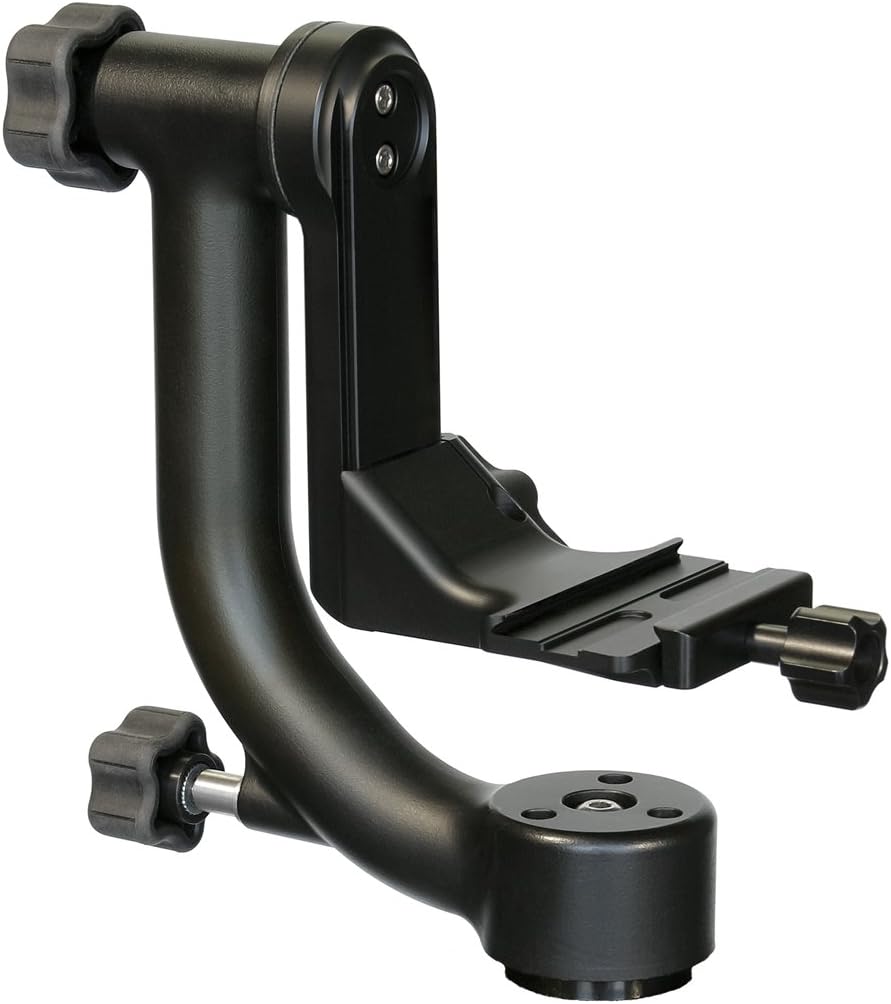
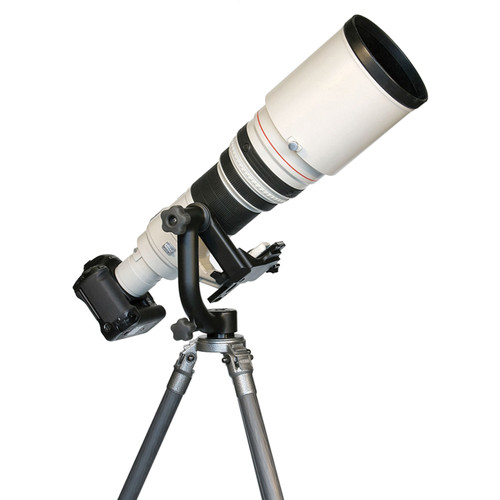
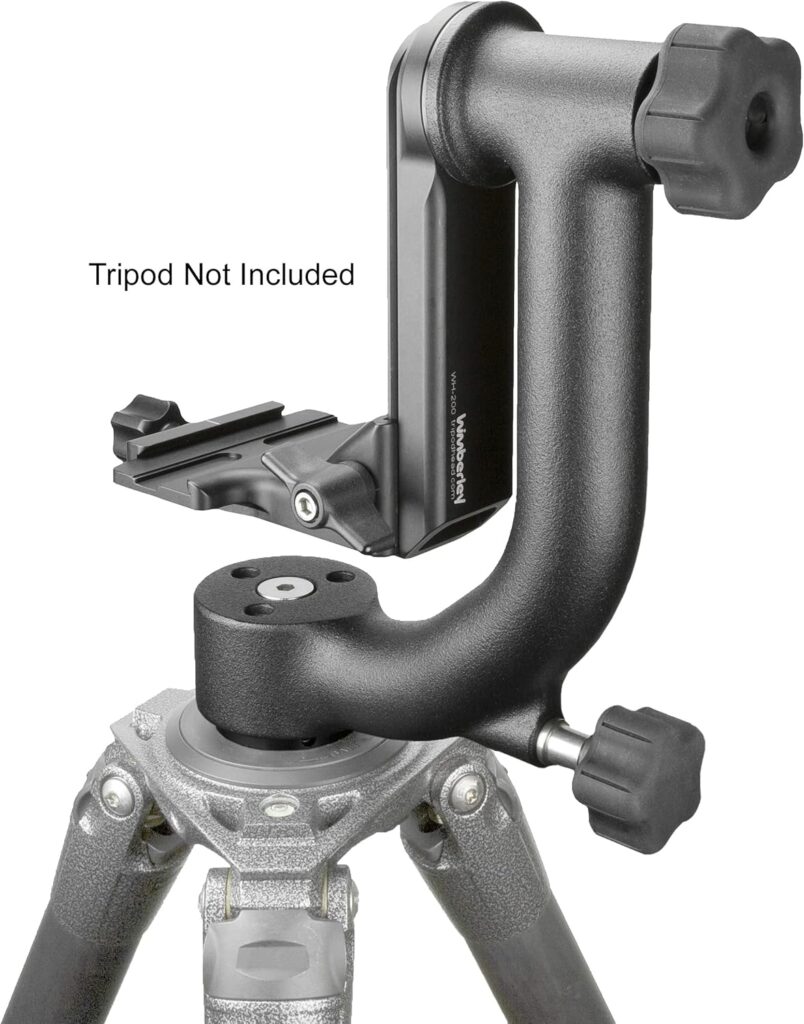
Really Right Stuff PG-02 MK2 Pano-Gimbal Head: Precision and Versatility for Wildlife Shooters
When tracking wildlife or stitching panoramas, precise control is critical. The Really Right Stuff PG-02 MK2 delivers exactly that. First, this pano-gimbal head offers multiple configurations to match your shooting style. Flexibility is built right into the design.
Moreover, the lever-release Arca-type quick release clamp ensures quick, secure mounting. It also makes the head widely compatible with other gear. The PG-02’s structure features two arms. One controls rotation, while the other manages the camera’s swing.
Importantly, the base arm connects to an integrated rotator with a laser-engraved 360° scale. This allows pinpoint positioning for panoramas or tracking subjects. Meanwhile, the vertical arm mounts easily to the base arm via an Arca-type clamp. It includes a millimeter scale for fine vertical adjustments.
Additionally, the vertical arm’s adjustable rotator offers 360° movement, complete with engraved markings for precise panning. In full-gimbal mode, you gain extra control over height adjustments. Engraved markings help you fine-tune camera and lens balance effortlessly.
Built from lightweight yet durable aluminum alloy, the PG-02 supports setups up to 15 pounds (6.8 kg). Despite its ruggedness, the head weighs only 3.2 pounds (1.5 kg), making it easy to carry into the wild. Also, the PG-02 includes two bubble levels for quick and accurate leveling in the field. The independent pan and tilt locks offer smooth, secure movements, ideal for fast wildlife action.
Last but not least, Really Right Stuff backs this gimbal with a limited 5-year warranty showing confidence in its long-term reliability.
Key Specs at a Glance:
- Camera Mounting Screw: No
- Quick Release Plate Type: Arca-Type
- Head Type: Pan & Tilt Head
- Load Capacity: 15 lb / 6.8 kg
- Materials: Aluminum Alloy
- Weight: 3.2 lb / 1.5 kg
- Panning Range: 360°
- Bubble Levels: 2
- Package Weight: 4.415 lb
- Box Dimensions: 11.4 x 6.2 x 4.7 inches
Included Items:
- PG-02 MK2 Pano-Gimbal Head with Full Gimbal
- M3 Hex Key
- 5/32″ Hex Key
- Carry Case
- Limited 5-Year Manufacturer Warranty
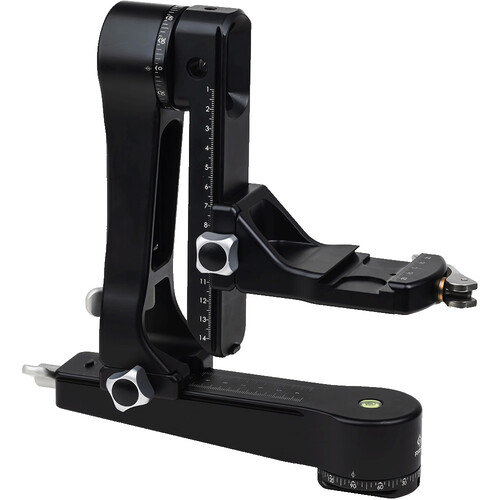
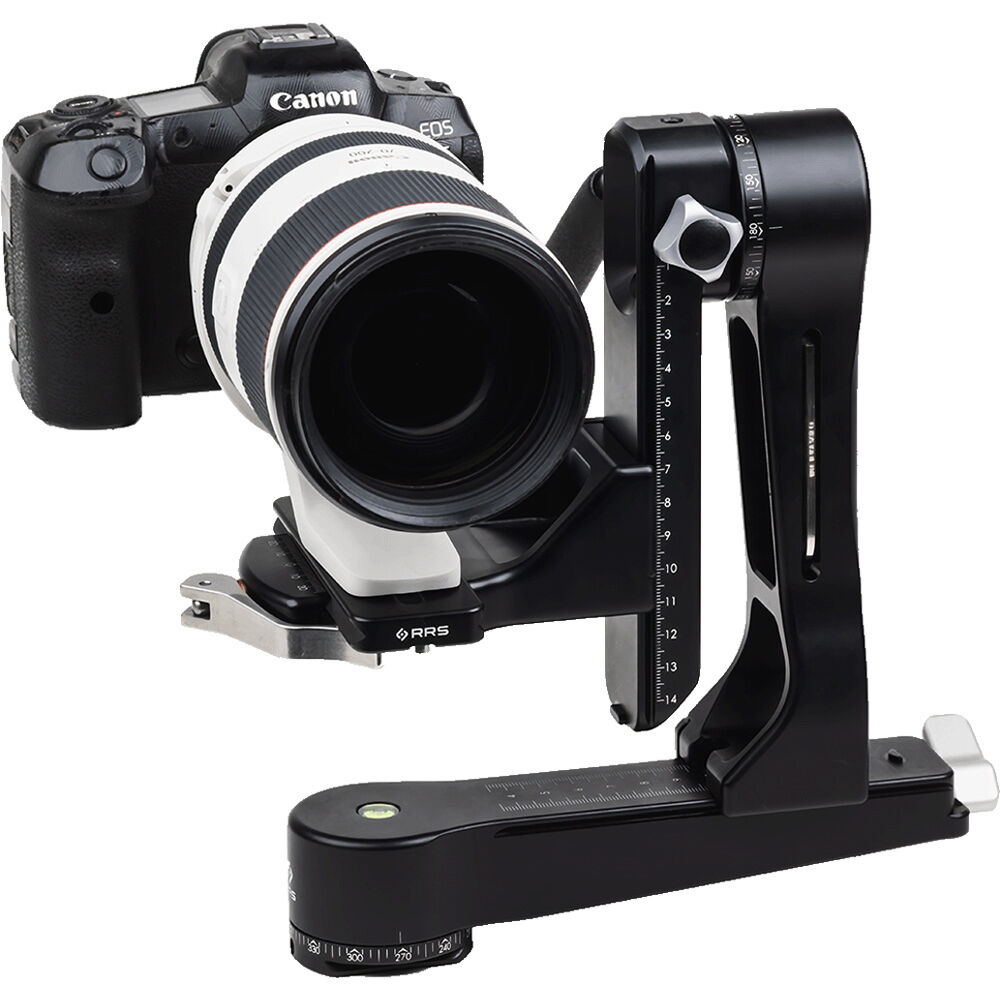
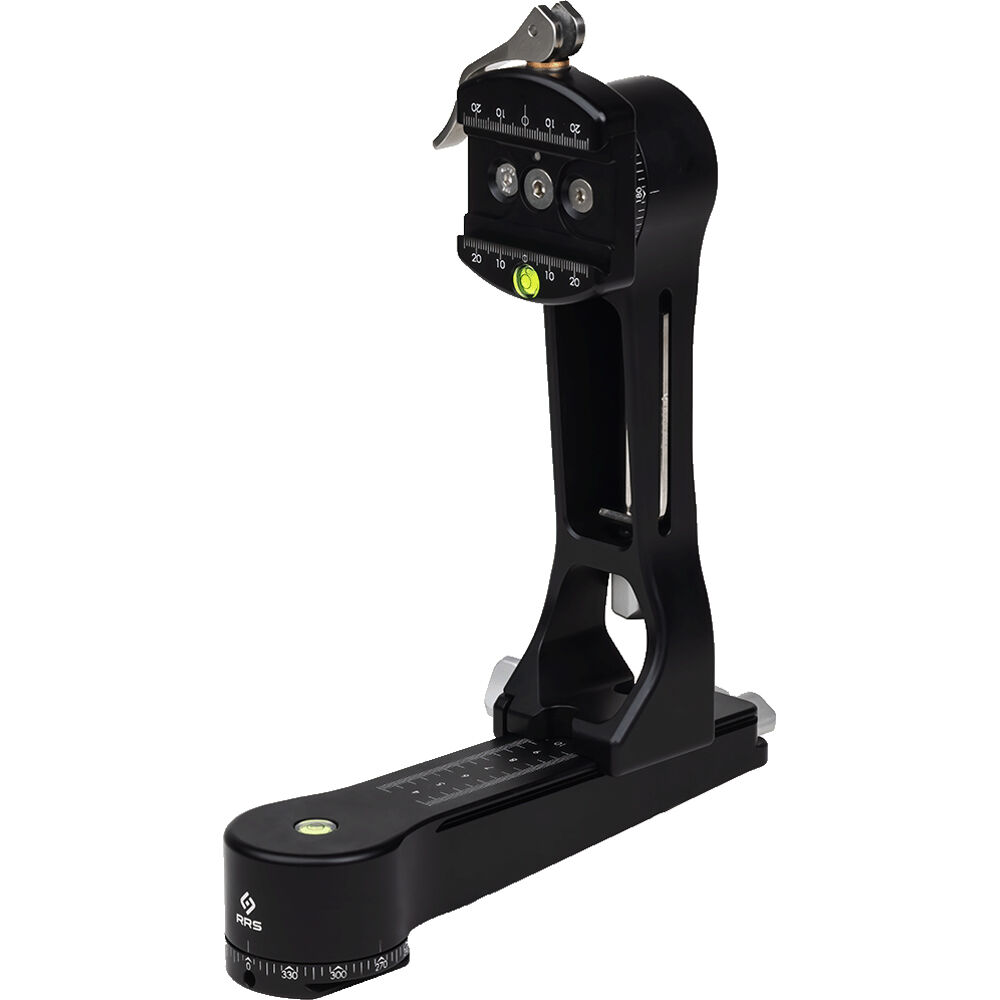
Leofoto PG-1 Gimbal Head Overview
- When you’re tracking fast-moving wildlife with heavy telephoto lenses, your support system matters. The Leofoto PG-1 Gimbal Head delivers lightweight yet durable performance, weighing just 2.2 lb while supporting rigs up to 55 lb.
- Built for action, the PG-1 features a swing arm with 3.9″ of height adjustability. This makes balancing large lenses smooth and easy. An included 3.9″ Arca-type quick release plate ensures quick mounting and dismounting, even during fast-paced shoots.
- For repeatable setups, the PG-1 has a measured scale along the swing arm. Plus, two 1/4″-20 accessory mounts allow you to attach arms, mics, or other tools without extra clutter.
- Smooth panning is critical when photographing wildlife on the move. Thanks to 360° rotation and an integrated bubble level, you can keep the horizon straight and your framing sharp.
- The Leofoto PG-1 is constructed with a flat 3/8″-16 base, making it easy to mount on a wide variety of tripods. The package includes an Allen key, a zippered carrying bag, and everything you need to get started.
Key Specs at a Glance:
- Load Capacity: 55.1 lb (25 kg)
- Weight: 2.2 lb (1 kg)
- Height: 8.9″ (225 mm)
- Base Diameter: 2.4″ (60 mm)
- Rotation: 360°
- Accessory Mounts: 2x 1/4″-20 threads
- Bubble Level: Yes
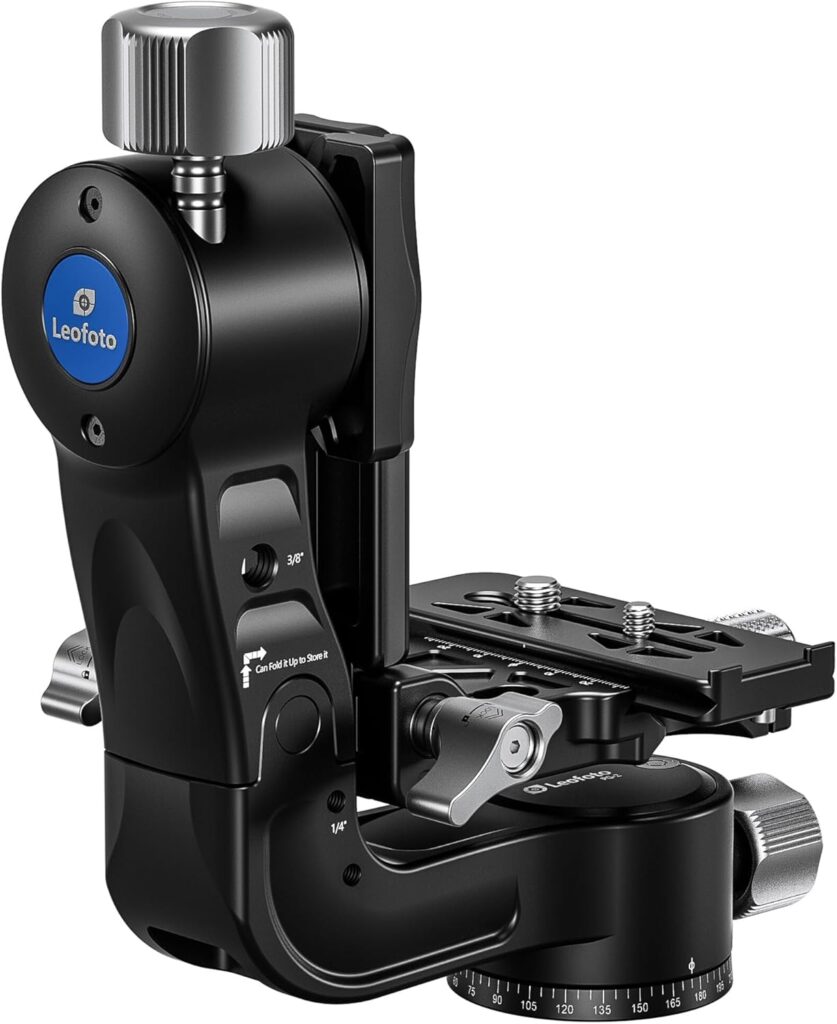
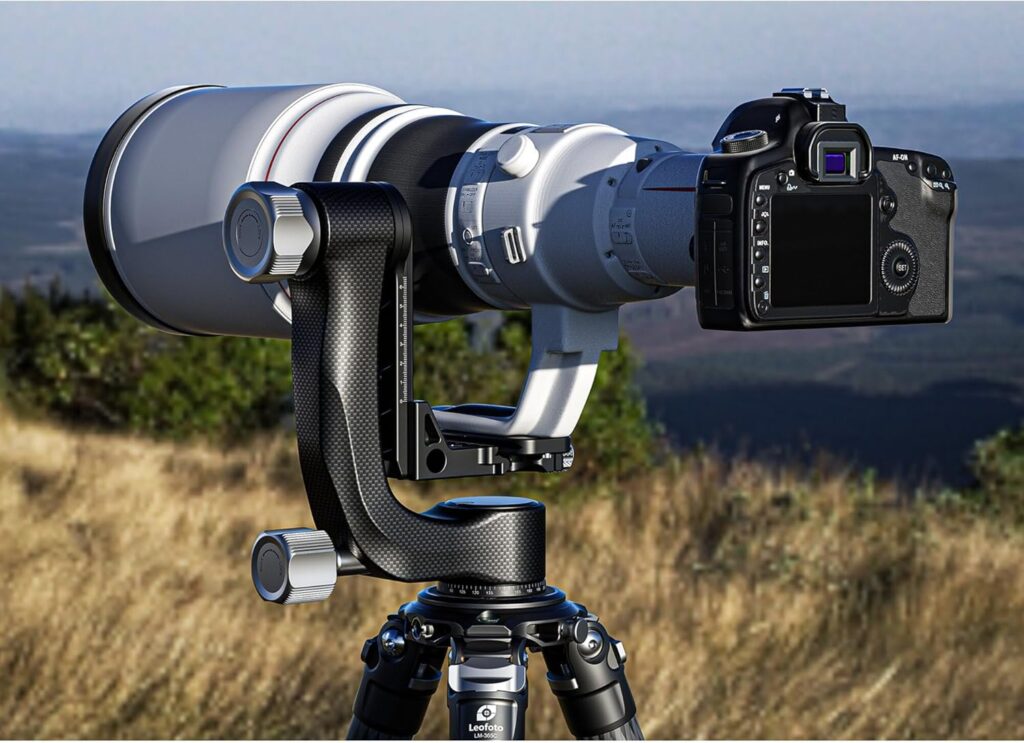
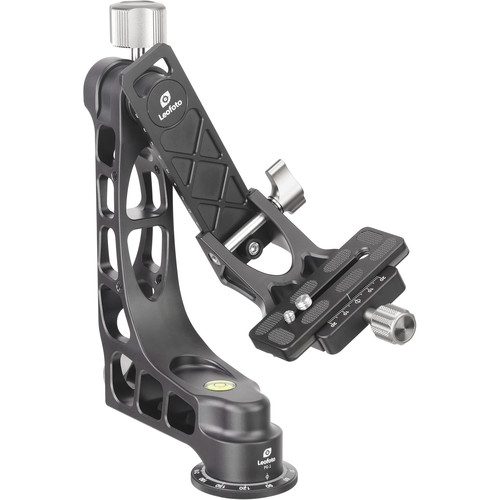
2) Ball Heads
Ball Heads and the Difference Between These and Gimbal Heads
Ball heads are one of the most common types of tripod heads used in photography. They consist of a ball-and-socket joint that allows for smooth and flexible movement in all directions. With a single locking knob, you can adjust the camera’s orientation quickly, which makes ball heads a versatile and compact option for many types of photography.
Compared to gimbal heads, ball heads are generally smaller, lighter, and better suited for travel or general-purpose use. However, they don’t offer the same kind of counterbalanced support for heavy, long lenses. Gimbal heads are designed to let your super-telephoto lens “float,” making it easier to follow fast-moving wildlife without having to fight the weight of your gear. Ball heads, while capable of handling substantial weight, rely on friction and locking mechanisms rather than true balance, which can make them less ideal for smooth tracking of moving animals with heavy glass.
Ball heads are great for wildlife photographers who are using lighter gear or shooting more static subjects, but they aren’t the best tool for action-packed birding or safari photography with big lenses.
Good for Lighter Lenses or General Photography
Ball heads shine when you’re working with shorter telephoto lenses (like 70–200mm), medium zooms, or prime lenses in more controlled environments. If you’re photographing animals at a wildlife sanctuary, doing macro work in nature, or capturing still subjects like deer or foxes at rest, a high-quality ball head can be more than adequate.
They also make a great all-around solution for photographers who want to transition from wildlife to landscape or travel photography without changing heads. The ability to quickly reposition and lock the camera at different angles is especially useful when you need to react to changes in the environment—like adjusting for light or quickly reframing a shot as an animal moves through a scene.
If you’re hiking long distances and want to save weight in your pack, a sturdy ball head paired with a carbon fiber tripod can give you good support without the bulk of a gimbal.
Not as Smooth with Very Heavy Lenses
While top-tier ball heads are rated to carry heavy loads some over 50 lbs, they don’t offer the fluid tracking motion required for fast action with large super-telephoto lenses like a 500mm f/4 or 600mm f/4. Once you loosen the ball head to follow your subject, it’s easy for the whole setup to tilt or fall forward due to the weight of the lens. This can lead to frustration and even damage if you’re not extremely careful.
If you’re using a heavy lens and shooting fast-moving subjects like birds in flight, a ball head will struggle to match the smooth, effortless motion that a gimbal head provides. Even the most solid ball heads may introduce instability when handling top-heavy setups unless you’re shooting at slower shutter speeds from a static position.
- Super versatile, compact
- Good for lighter lenses or general photography
- Not as smooth with very heavy lenses
Top Ball Head Picks
Really Right Stuff BH-55 Ball Head with Full-Size Lever-Release Clamp
Top-tier performance for serious wildlife photographers using medium to heavy telephoto lenses.
The RRS BH-55 is the gold standard in ball heads for professional photographers who demand rugged reliability, smooth control, and intuitive handling. Machined from solid aircraft-grade aluminum and stainless steel, this ball head supports camera and lens setups weighing up to 50 lbs, making it ideal for large DSLR or mirrorless bodies paired with 300mm to 400mm telephoto lenses.
What sets the BH-55 apart is its ergonomic, intuitive control layout. With oversized knobs, independent pan/tilt locks, and micrometer drag control, it gives wildlife photographers precision without sacrificing speed.
If you’re shooting static wildlife scenes—like waiting for a heron to take off, a fox to emerge from the brush, or framing distant elk in low light—this head keeps your gear rock steady. However, for fast-paced tracking (like birds in flight) with 500mm+ lenses, a gimbal may still be the better fit.
Key Benefits for Wildlife Photography
- Incredible Load Capacity: Supports up to 50 lbs. – perfect for medium-to-heavy wildlife setups.
- Dual 90° Drop-Notches: Instantly switch between horizontal and vertical compositions.
- Ergonomic, Oversized Knobs: Easy to operate by feel in the field, even with gloves.
- Micrometer Drag Control: Apply repeatable friction settings based on lens weight.
- Low Profile Design: Keeps your center of gravity stable – critical when shooting on uneven terrain.
- Precision Panning Base: 360° rotation with laser-engraved 2.5° intervals, ideal for pano wildlife & landscapes.
📐 Quick Specs
| Feature | Details |
|---|---|
| Head Type | Ball Head |
| Load Capacity | 50 lb / 22.7 kg |
| Weight | 2 lb / 0.91 kg |
| Vertical Tilt | +90° to 0° |
| Lateral Tilt | -45° to +45° |
| Base Mount | Flat Base with 3/8″-16 Female |
| Camera Mount | 1/4″-20 Screw (Arca-Type Quick Release) |
| Drag Control | Yes |
| Independent Locks | Yes (Pan, Tilt) |
| Bubble Level | Yes |
Perfect Use Case
If you’re a wildlife photographer who:
- Uses a 300mm or 400mm prime lens,
- Prioritizes precision and build quality
- Shoots in rugged conditions and values durability
- Wants stable static shots or slow pans of resting or slow-moving wildlife…the RRS BH-55 is an investment in long-term reliability.
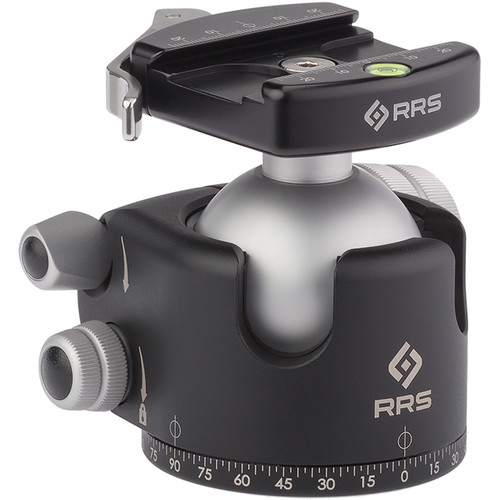
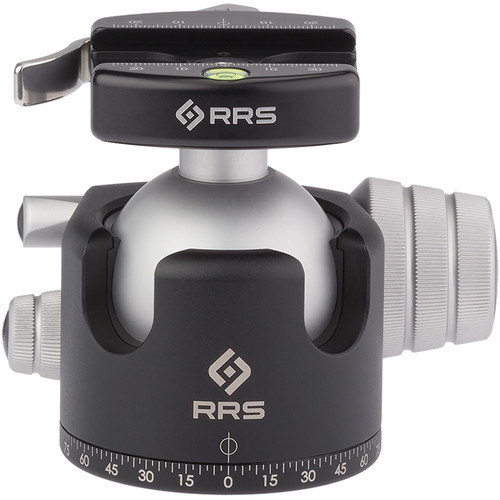
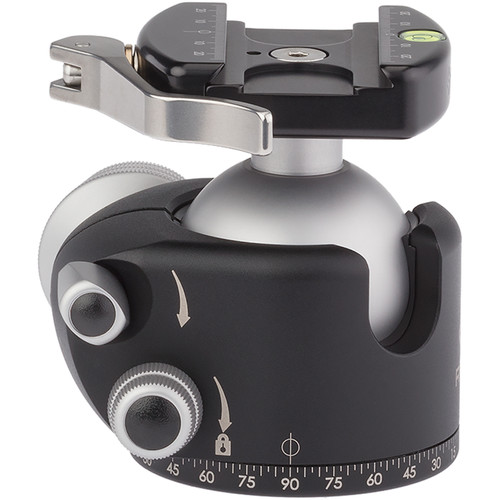
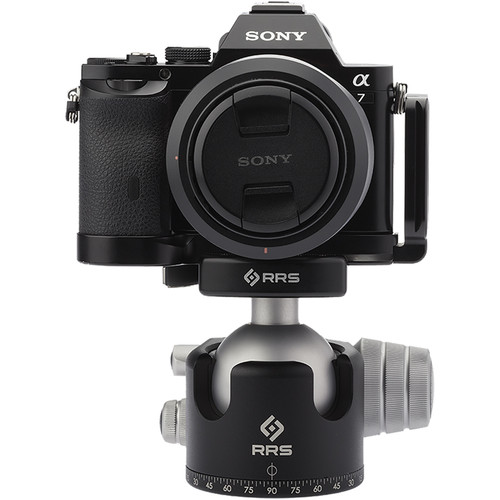
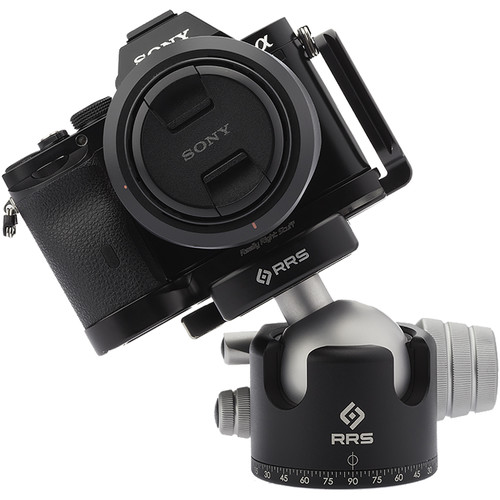
Arca-Swiss Z1+ Single Pan Classic Ball Head
Compact. Powerful. Trusted by pros in the field.
Best for: Pro wildlife shooters seeking rock-solid support with precision drag control in a compact form.
The Arca-Swiss Z1+ Classic is a refined, high-performance ball head built for serious photographers who need strength, reliability, and smooth control in demanding conditions. This version features the Classic screw-knob clamp, preferred by many for its simplicity and rock-solid grip.
What It Is and Why It’s Great for Wildlife
The Z1+ Classic uses Arca-Swiss’s patented aspherical ball design and Motion Related Gravity Control (MRGC) system. These innovations provide progressive resistance, which helps prevent sudden shifts or sag when you loosen the tension – a huge plus when you’re working with large telephoto lenses in the field.
The head offers independent pan control, a dedicated friction adjustment, and dual drop-notches, making it easy to go from horizontal to vertical shots. It supports up to 132 lb (60 kg) – more than enough for even the most demanding wildlife setups.
Whether you’re photographing elk at dawn or tracking eagles overhead, the Z1+ Classic delivers the control and stability you need to stay locked in or move fluidly when needed.
Good for Lighter Lenses or General Photography
While this ball head is built to handle big loads, it’s also great for general-purpose photography. If you’re switching between wildlife, landscapes, and portraits, the Z1+ Classic offers a smooth, intuitive experience – especially when you want one head that does it all.
Not as Smooth with Very Heavy Lenses as Gimbals
As powerful and precise as it is, the Z1+ Classic still can’t beat a gimbal head when it comes to effortless panning and tilting with large super-telephoto lenses. If you’re primarily shooting fast-moving birds or need long sessions of smooth, continuous tracking, a gimbal is still the better option. But for everything else, this head punches far above its weight.
Key Benefits for Wildlife Photography
Massive Load Capacity
With a rated load of 130 lbs (59 kg), the Z1+ Classic can handle your heaviest wildlife setups without flinching – even in windy conditions or on uneven ground. Once locked in, your gear stays rock steady.
Smooth, Predictable Movement
The aspherical ball design creates progressive drag, giving you silky motion with excellent resistance — perfect for slow, deliberate adjustments when photographing animals at rest or waiting for the right moment.
Compact and Travel-Ready
At just 1.5 lbs. (680 g), this head is impressively light for its class. Whether you’re hiking deep into a national park or flying with minimal gear, the Z1+ keeps your load manageable.
Lock It and Leave It
The Z1+ holds position with minimal creep, so when you’re zoomed in on a perched bird or lining up a long exposure in low light, you don’t need to worry about your framing shifting over time.
Quick Specs
| Feature | Details |
|---|---|
| Head Type | Ball Head |
| Load Capacity | 130 lb / 59 kg |
| Weight | 1.5 lb / 0.68 kg |
| Friction Control | Yes |
| Independent Pan Lock | Yes |
| Pan Base | 360° with engraved markings |
| Camera Mount | Arca-Type Compatible |
| Material | High-grade aluminum |
| Height | ~4.1 in / 10.4 cm |
| Base Mount | Flat Base with 3/8″-16 Female thread |
Perfect Use Case
Choose the Z1+ Classic if you:
- Want max stability in a small, rugged package
- Frequently hike, travel, or shoot remote locations
- Need a versatile head that works for both portrait and wildlife photography
- Use telephoto lenses up to 400mm–500mm and don’t require fluid gimbal tracking
The Arca-Swiss Z1+ Classic offers gimbal-level strength in a smaller, simpler format, ideal for wildlife photographers who value portability without compromising on precision.
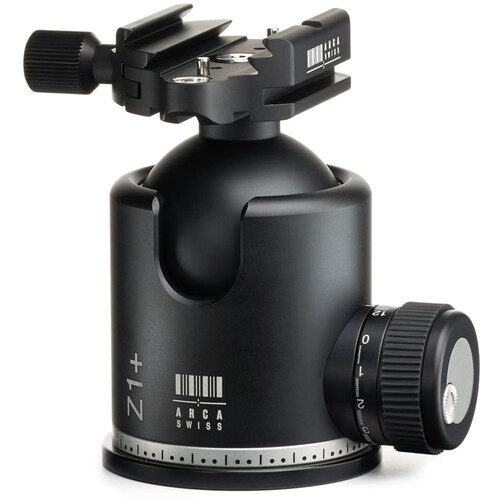
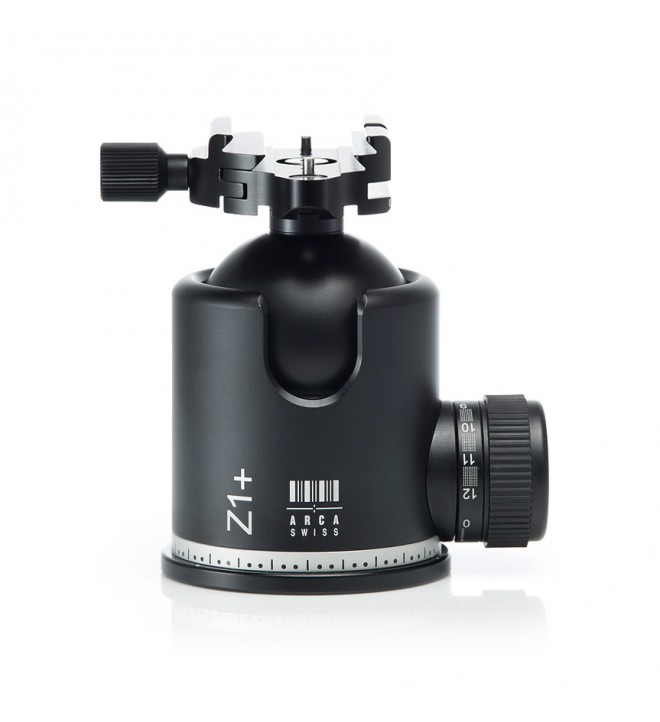
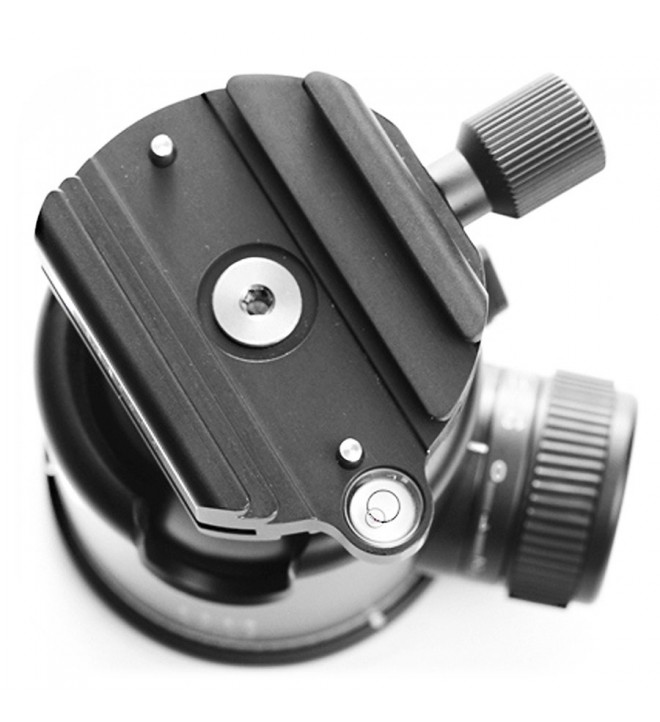
Leofoto LH-55 Ball Head
A high-performance budget-friendly beast for heavy setups.
The Leofoto LH-55 is a large, full-featured ball head with a 55mm ball diameter, dual panning bases (top and bottom), and a solid 55 lb (25 kg) load capacity. It features an Arca-type quick release system for securing a DSLR, mirrorless, or video camera up to 55 lb. While not quite as refined as the RRS or Arca-Swiss options, it delivers exceptional value for wildlife photographers needing strength and features on a budget.
It’s particularly good for static wildlife scenes, long-lens portraits, or mixed-use shoots, especially with lenses up to 400mm or 100–500mm zooms. Its movement is smooth, the knobs are large and easy to use, and it’s Arca-compatible right out of the box.
Key Benefits for Wildlife Photography
- Dual Panning: Top and bottom pan locks for better panoramic control
- Great Price-to-Performance: Offers pro-level features at a mid-range price
- Large 55mm Ball: Improves smoothness and stability, especially with heavier loads
- Precision Tension Control: Helps you dial in just the right amount of drag for your lens
Quick Specs
| Feature | Details |
| Head Type | Ball Head |
| Load Capacity | 55 lb / 25 kg |
| Weight | 1.85 lb / 0.84 kg |
| Dual Panning | Yes (top and base) |
| Material | CNC-machined aluminum |
| Ball Diameter | 55 mm |
| Friction Control | Yes |
| Camera Mount | Arca-Type Compatible |
Perfect Use Case
If you:
- Shoot with 100–500mm zooms or 400mm primes
- Need a solid tripod head at a lower cost
- Want dual panning for landscapes and wide wildlife scenes
- Are okay trading a bit of refinement for savings
Then the Leofoto LH-55 is one of the best bang-for-your-buck heads for wildlife photographers.
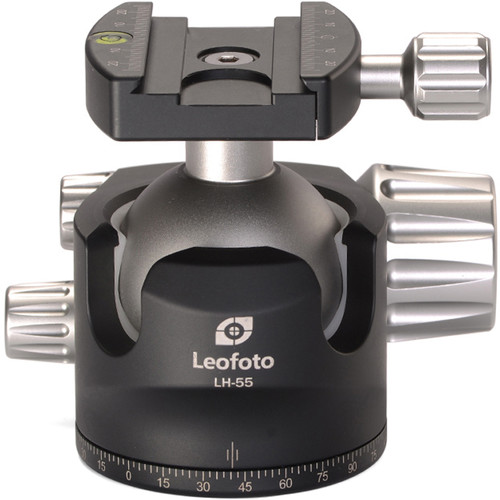
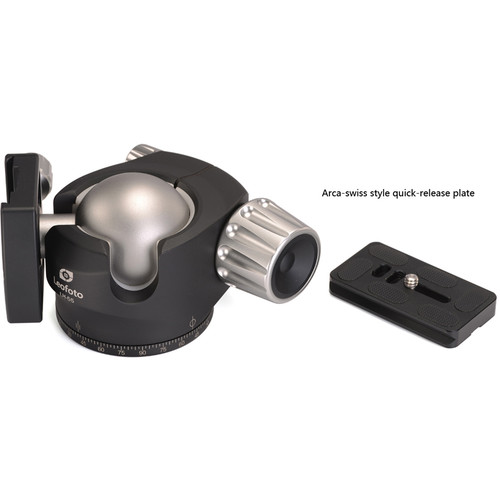
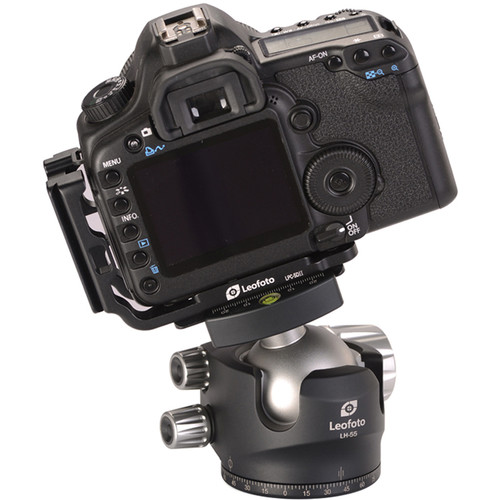
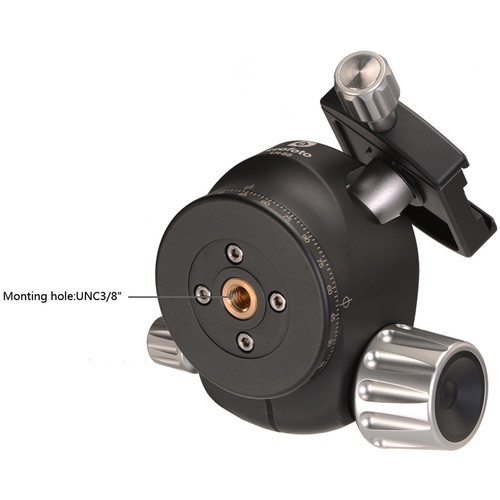
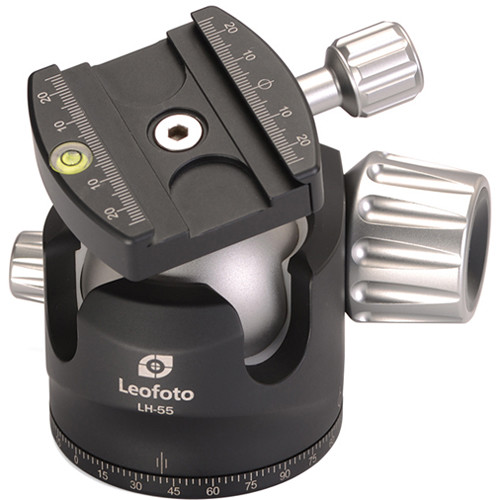
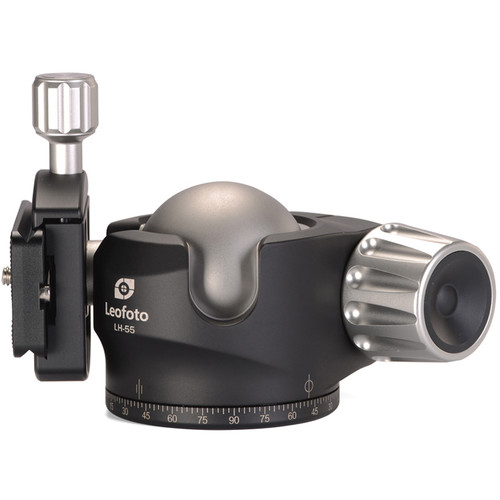
3) Fluid Head vs. Gimbal for Wildlife Photography
When it comes to wildlife photography, especially with telephoto lenses, the tripod head you choose is just as critical as the camera body or lens. Whether you’re tracking birds in flight, filming animal behavior, or photographing a leopard resting in the brush, your choice between a fluid head and a gimbal head can significantly impact your results.
A fluid head is designed for smooth, controlled movement, especially during panning and tilting. Originally created for video work, these heads are increasingly being used by wildlife photographers – especially those who record video or prefer gradual tracking.
Let’s break down the key differences, using two trusted fluid head options – the Manfrotto 502AH and Gitzo GHF2W and see how they stack up against a traditional gimbal head in the field.
Top Fluid Head Picks
Manfrotto 502AH Pro Video Head
The Manfrotto 502AH Pro Video Head with Flat Base is an affordable yet remarkably fully featured professional head that represents an advance over the popular 501HDV, with sturdier construction and featuring Manfrotto’s patented bridging technology (inherited from the 509 and 504 heads). This head is designed for executing cinematic moves with compact camcorders and DSLR cameras. The 502AH comes in two versions – the “AH” flat base version with a 3/8″-16 mounting hole such as this one, and the “A” ball base version, which is separately available.
The weight capacity is 22 lb and the counterbalance supports 8.8 lb. The balance plate’s 3.27″ range allows you to correct for uneven payloads due to matte boxes or DSLR rig configurations.
The bridging technology ensures that the pan friction control is intuitive and easy to set but is also protected against knocks. There are independent locks for pan and tilt and drag for both is selectable in a continuous range from zero to the maximum level. This allows you to operate the head in a confident, smooth manner using the included pan bar.
- Pan drag and tilt drag are continuously adjustable from 0 (no drag) to the maximum level
- Sliding quick release plate secured by a secondary safety system
- The flat base has a 3/8″-16 female threaded mounting hole for attaching to tripods, sliders, and other platforms
- Great value for hybrid shooters.
- Solid, reliable, budget-friendly.
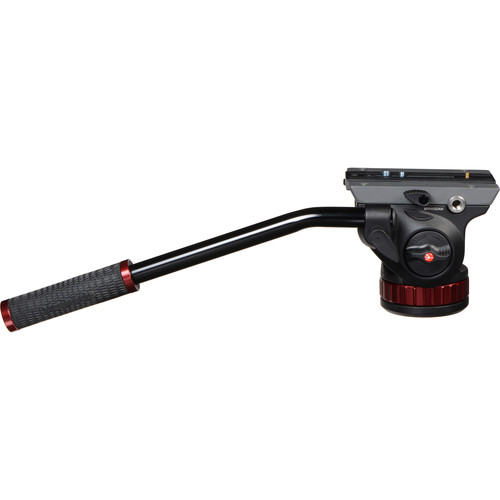
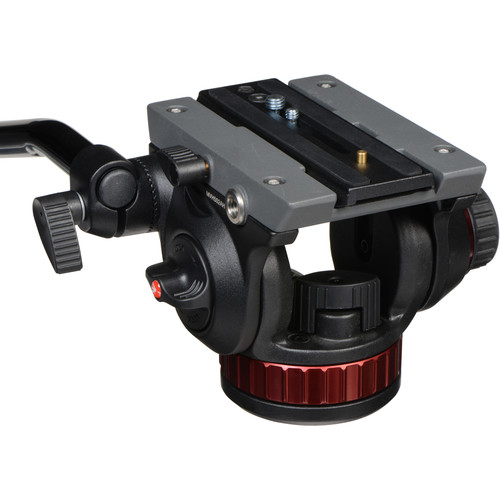
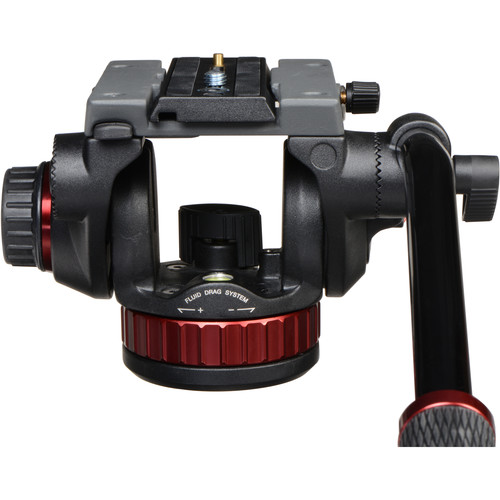
Gitzo GHF2W 2 Way Fluid Head
The Gitzo 2-Way Fluid Head weighs just 1.3 lb, making it a lightweight yet powerful option for bird photography, digiscoping, and wildlife video. Thanks to its built-in fluid cartridges, it delivers exceptionally smooth 360° panning and a -60° to +90° lateral tilt – ideal for tracking subjects in the field.
The spring-loaded counterbalance system offers stable support with fixed drag, while adjustable tension lets you fine-tune resistance to your shooting style. It supports gear up to 13.2 lb, and each movement axis has its own independent locking knob for added control.
At just 2.2 inches tall, it maintains a low profile and is Arca-Swiss compatible. The head comes with a rubberized quick-release plate (1/4″-20 thread) and a removable panning bar for smooth, guided motion.
Key Features:
- Load Capacity: 13.2 lb
- Height: 2.2″
- Weight: 1.3 lb
- Arca-Type Compatible
- Spring-Loaded Counter Balance System
- -60°/90° Tilt, 360° Pan
- Independent Pan and Tilt Locking Knobs
- Fluid Cartridges Provide Smooth Movement
- Friction Control for Each Axis
- Includes Panning Bar & QR Plate
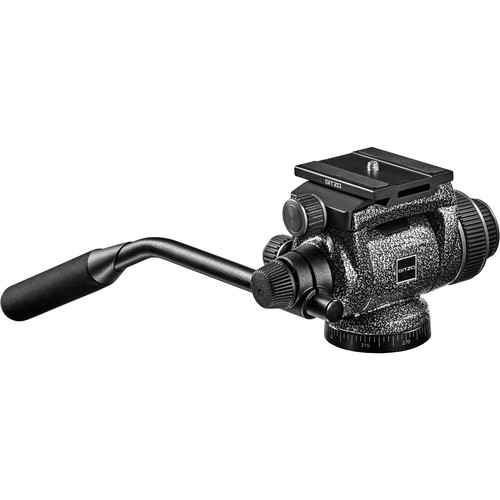
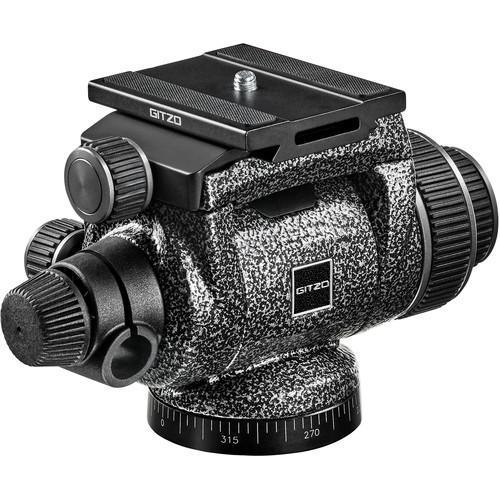
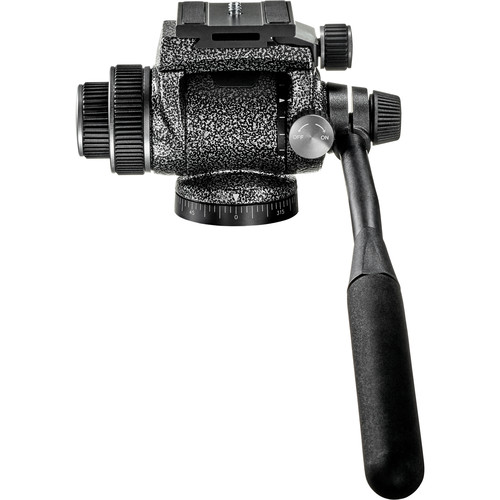
Fluid Head vs. Gimbal: A Side-by-Side Comparison
| Feature | Fluid Head (502AH / GHF2W) | Gimbal Head |
|---|---|---|
| Best for | Wildlife video, smooth panning | Birds in flight, fast-moving subjects |
| Balance | Manual drag control | Perfectly balanced for motion |
| Motion feel | Smooth, dampened | Effortless, natural float |
| Orientation | Horizontal preferred | Easy vertical & horizontal tracking |
| Weight | Heavier | Lightweight options available |
| Cost | Budget to mid-range | Mid to high-end |
| Ease of use | Great for beginners and video | Best for experienced still shooters |
Which One Should You Choose?
If your goal is to shoot wildlife video, capture slow, deliberate motion, or if you’re working on a budget – a fluid head like the Manfrotto 502AH or Gitzo GHF2W is a strong choice.
If your primary focus is still photography of fast-moving subjects like raptors, seabirds, or mammals on the run, a gimbal head will give you superior tracking and flexibility.
Final Thoughts
For hybrid shooters, starting with a fluid head makes sense. The 502AH is a reliable, cost-effective option to get started, while the GHF2W offers a refined, lightweight feel for more advanced users. As your needs grow, you may find yourself adding a gimbal head to your kit to better match the pace of wildlife photography in action.
Pro Tip: Many wildlife pros carry both heads in their gear bag using the fluid head for video sequences or static subjects and the gimbal for birds in flight or handheld spotting.
There are many fluid heads on the market. The Manfrotto 502AH and Gitzo GHF2W are just two solid examples that offer different strengths depending on your needs and budget.
4) Gimbal + Ball Head Hybrid: Best of Both Worlds
Combining a gimbal attachment with a ball head gives you versatile control and smooth tracking for heavy telephoto lenses while retaining the quick, flexible positioning of a ball head. This hybrid setup lets you switch seamlessly between stable, fluid movements and fast adjustments – perfect for wildlife photographers who need both precision and agility in the field.
The GT2 Tomahawk V2 Gimbal Head Attachments
The GT2 Tomahawk V2 Gimbal Head Attachment from ProMediaGear mounts onto Arca-type ball heads to provide smooth gimbal movement for telephoto lenses. It features dual Arca dovetails for secure attachment to ball heads and an Arca clamp with quick release on top for lens mounting.
Combined with the ball head’s tilt and swivel, the setup offers full-range movement. Adjustable knobs control movement tension, and a built-in bubble level helps ensure balance. The base includes extra 1/4″-20 and 3/8″-16 threaded holes for mounting on tripods, monopods, or other supports.
Made from durable T6061 aluminum with sealed stainless steel bearings, the GT2 offers a lightweight, reliable gimbal option for wildlife photographers using ball heads.
Key Features:
- Add-On Gimbal Attachment for Ball Heads
- For Ball Heads, Tripods, Monopods & More
- Load Capacity: 50 lb
- Height: 7″
- Weight: 0.95 lb
- Two Arca-Type Dovetails at Base
- 1/4″-20 & 3/8″-16 Threads at Base
- Arca-Type Clamp & QR Plate on Top
- T6061 Aluminum Construction
- Bubble Level
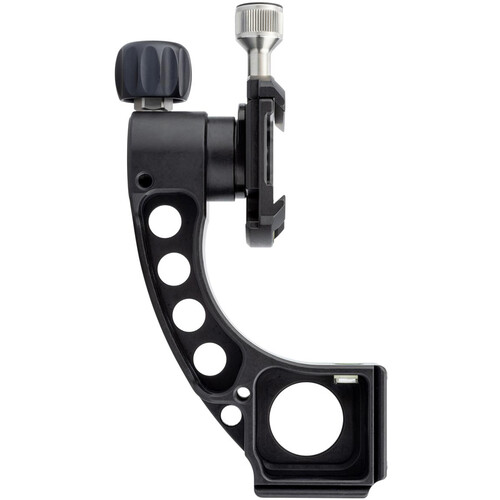
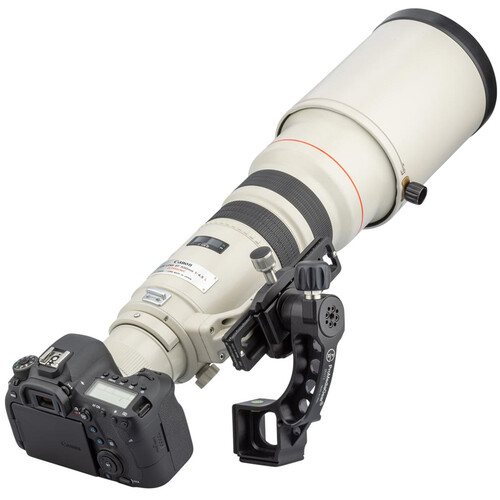
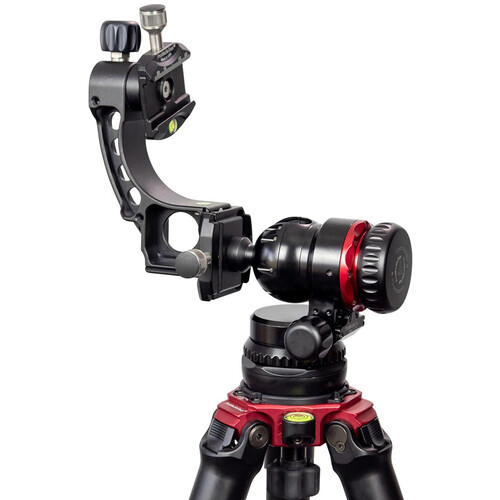
Leofoto MPG-02 Gimbal Attachment for Tripod Heads
The MPG-02 Gimbal Attachment is a compact, travel-friendly solution for photographers who want gimbal-like functionality without the bulk. Ideal for long telephoto lenses, it mounts to a ball head (or other standard tripod heads) and raises your camera to a more balanced, angled position – great for wildlife or action shooting.
This attachment features two Arca-type compatible bases set at 90° angles, each with 1/4″-20 and 3/8″-16 threaded holes for maximum compatibility and flexible positioning.
Key Features:
- Max Load: 48.5 lb
- Adds gimbal functionality to standard tripod heads
- Dual Arca-type bases at 90° for flexible mounting
- Threaded mounting holes for wide compatibility
- Bubble level for balanced shooting
- Back-stop screws for plate security
- Engraved degree marks for precision and repeatability
- Aluminum construction with large, easy-to-adjust tension knob
Perfect for photographers who want to travel light, customize their setup, and still enjoy the tracking control of a gimbal.
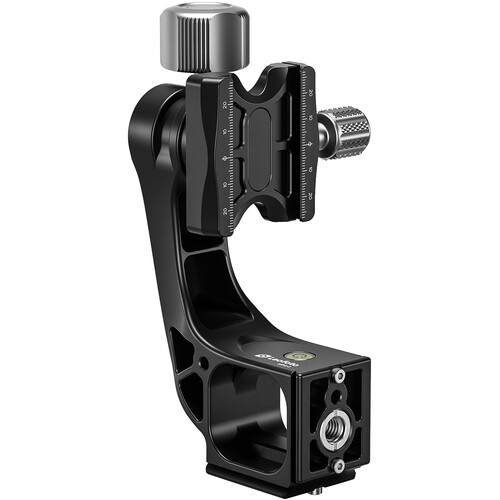
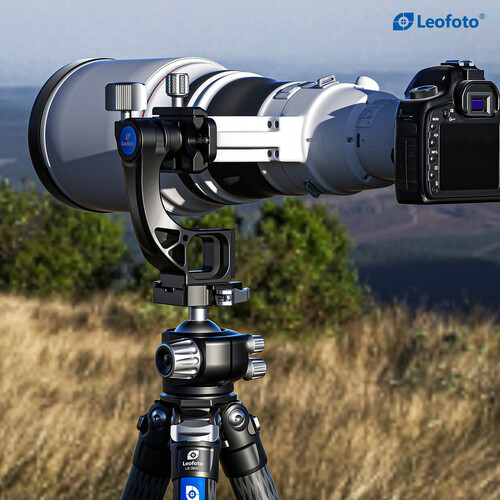
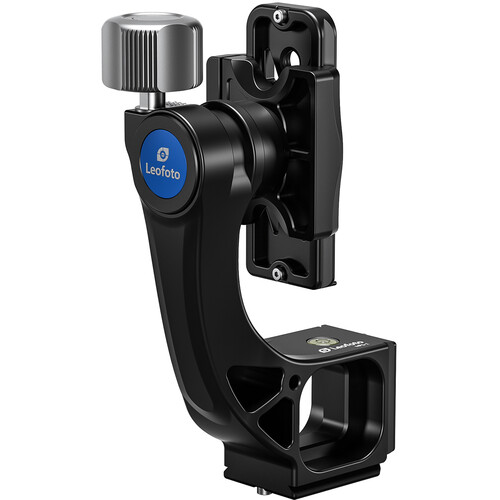
5) Other Specialized Heads
- Pistol Grip Heads: Offer fast, intuitive framing with a single lever, making quick adjustments easy. However, they provide less precise control and generally lack smooth fluid movement, so they’re best suited for lightweight setups or casual wildlife shooting.
- Pan Heads: Ideal for landscape photographers and creating stitched panoramas, pan heads allow smooth horizontal rotation but usually lack tilt control and are not designed for fast-moving subjects.
6) Don’t Forget the Legs: Tripod Stability Matters
Choosing the Right Tripod Legs
This step is important! I learned the hard way when my tripod legs couldn’t support the weight of my gimbal head and camera. The entire setup nearly toppled, putting my gear at serious risk. Always make sure your tripod legs are rated to handle the combined weight of your head, camera, and lens to keep your equipment stable and safe in the field.
- Must match or exceed the total load of your head + camera + lens
- Carbon fiber is preferred for its strength-to-weight ratio and vibration dampening
- Look for strong, wide stances to enhance stability on uneven or rugged terrain
- Twist locks tend to be quicker and quieter in the field, while flip locks offer visual confirmation
- Consider reversible or spiked feet for better grip on different surfaces
- A hook or stone bag at the center column adds weight for extra stability
Pro Tips
- Hang a stone bag or your camera bag under the center for added stability in wind or water
- Always extend the thicker leg sections first
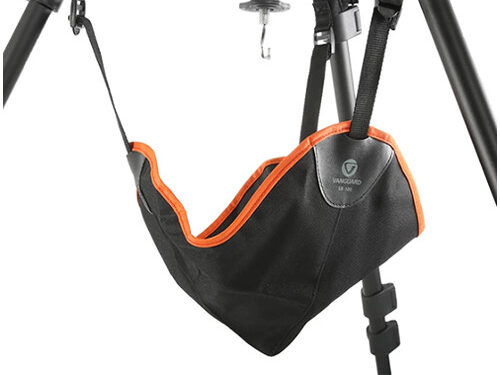
Quick Buying Tips for Wildlife Photographers
- Choose a gimbal head for heavy telephoto lenses and tracking fast-moving subjects like birds in flight.
- Use a fluid head if you’re shooting wildlife video or want smooth, controlled panning with heavier gear.
- Ball heads are a solid all-rounder for lightweight or travel setups, offering quick repositioning and compact size.
- Invest in stable, high-quality tripod legs – carbon fiber is lighter, but aluminum can offer better value for stability.
- Don’t skip a stone bag or center-weight hook – adding extra weight can drastically improve stability in windy or uneven terrain.
- Use ground spikes or rubber feet depending on the terrain for optimal grip and stability.
- Check compatibility with your camera and lens mounts – Arca-Swiss is the most widely supported standard.
- Consider a monopod for mobile shooting when a full tripod setup isn’t practical.
Conclusion
A great tripod head can make all the difference when you’re tracking elusive wildlife. Don’t overlook the importance of a solid support system – it’s the foundation of every successful shot in the wild. Whether you choose a gimbal, ball, or fluid head, pairing it with strong tripod legs, adding a stone bag for extra stability, and carrying a lightweight monopod for when you need to stay mobile will help keep your shots sharp and your gear safe.
Coming Up Next
Camouflage & Concealment Gear for Wildlife Photography. You’ve got the gear to steady your shots, now let’s make sure you stay hidden while you capture them.
In our next post, we’ll explore how to disappear into the wild with the help of camouflage clothing, lens covers, pop-up blinds, and stealth techniques.
Whether you’re photographing wildlife from a hide or stalking quietly through the brush, this gear helps you blend in and get closer than ever before.
Stay tuned — your next wildlife encounter might never see you coming.
Happy shooting!




